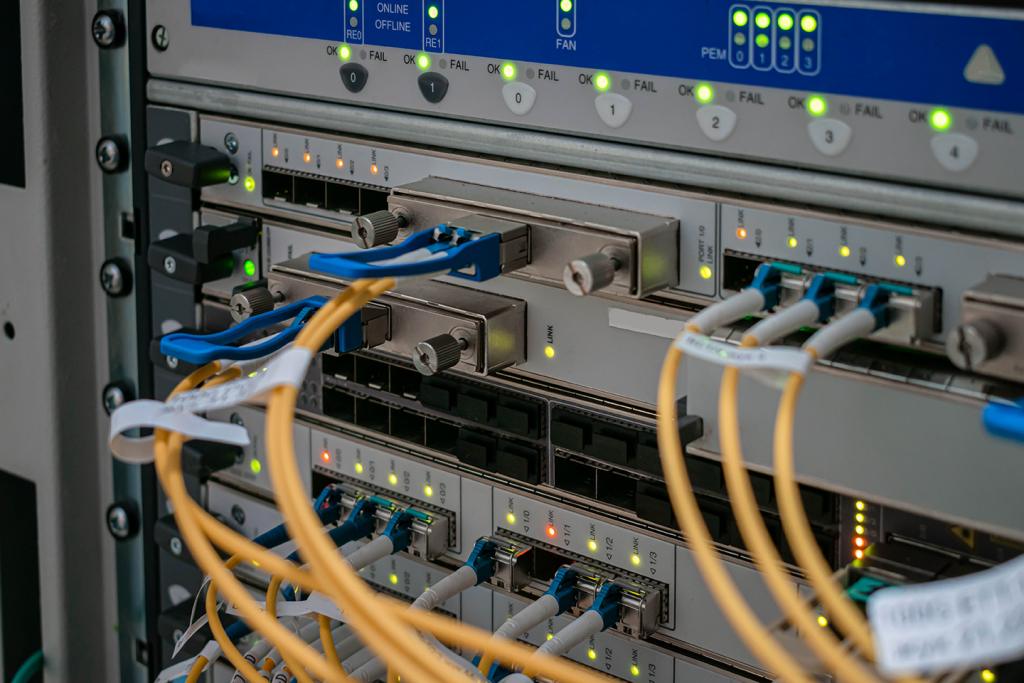As network demands continue to soar, the need for faster and more efficient data transmission technologies becomes increasingly critical. Among the various solutions available, 400G optical transceivers stand out for their ability to handle immense data loads. However, when it comes to connecting these transceivers, two primary options are available: Direct Attach Cables (DAC) and Active Optical Cables (AOC). In this blog, we’ll explore the differences between DAC and AOC, and guide you on how to choose the right option for your 400G optical transceivers.
What are DAC and AOC?
Direct Attach Cables (DAC)
DACs are copper cables with transceivers permanently attached to both ends. They are designed for short-range data transmission, typically within a rack or between adjacent racks. DACs are available in two main types: passive and active.
- Passive DACs: Do not have any signal amplification or processing components and rely on the transceivers and the copper medium to transmit data.
- Active DACs: Contain electronics to boost signal strength, enabling slightly longer transmission distances and improved performance compared to passive DACs.
Active Optical Cables (AOC)
AOCs, on the other hand, use optical fibre instead of copper. They have active transceivers with integrated optics and electronics at both ends, which convert electrical signals to optical signals and vice versa. AOCs are designed for longer-range data transmission compared to DACs and are more suitable for applications requiring extended reach and higher performance.
Key Differences Between DAC and AOC
1. Transmission Distance
- DAC: Typically supports short distances up to 7 meters for passive DACs and up to 15 meters for active DACs.
- AOC: Supports much longer distances, often up to 100 meters or more, depending on the specific cable and network requirements.
2. Data Rate and Performance
- DAC: Generally used for lower data rate applications, although active DACs can support higher data rates similar to AOCs.
- AOC: Offers higher performance and can support data rates up to 400 Gbps, making them ideal for high-speed, long-distance data transmission.
3. Cable Material and Flexibility
- DAC: Made from copper, which is heavier and less flexible than optical fibre. Copper cables can also be susceptible to electromagnetic interference (EMI).
- AOC: Made from lightweight and flexible optical fibre, which is immune to EMI, offering greater flexibility and ease of installation.
4. Power Consumption
- DAC: Passive DACs do not consume additional power, while active DACs require power for signal amplification.
- AOC: Generally consumes more power than DACs due to the active components required for signal conversion and amplification.
5. Cost
- DAC: Typically less expensive than AOCs, especially for short-distance applications.
- AOC: Higher cost due to the advanced technology and materials used, but can be more cost-effective for long-distance applications due to reduced infrastructure requirements.
How to Choose Between DAC and AOC for 400G Optical Transceivers
Choosing between DAC and AOC for your 400G optical transceivers depends on several factors:
1. Distance Requirements
- Short Distances: If your application involves short-distance connections within a rack or between adjacent racks, DACs are a cost-effective and efficient choice.
- Long Distances: For longer distances, AOCs are the better option, offering higher performance and reliable data transmission over extended reaches.
2. Budget Considerations
- Cost Sensitivity: If budget constraints are a primary concern and the application involves short distances, DACs provide a more economical solution.
- Performance Over Cost: If performance and distance are critical, investing in AOCs is worthwhile despite the higher initial cost.
3. Network Environment
- Electromagnetic Interference: In environments with high EMI, AOCs are preferable due to their immunity to interference.
- Flexibility and Ease of Installation: AOCs offer greater flexibility and are easier to install in complex environments due to their lightweight and pliable nature.
4. Power Consumption
- Low Power Needs: For applications where power consumption is a concern, passive DACs are ideal as they do not require additional power.
- Performance Priority: If the priority is on performance and distance, AOCs, despite their higher power consumption, provide the necessary capabilities.
Conclusion
Both DAC and AOC play crucial roles in the realm of 400G optical transceivers, each offering distinct advantages depending on the specific requirements of your network. By understanding the differences and evaluating factors such as distance, budget, network environment, and power consumption, you can make an informed decision that ensures optimal performance and efficiency for your network infrastructure.
As you navigate the complexities of modern network demands, choosing the right cabling solution is pivotal in achieving a robust, high-performing network. Embrace the benefits of DAC and AOC and tailor your choices to meet the unique needs of your organisation.

